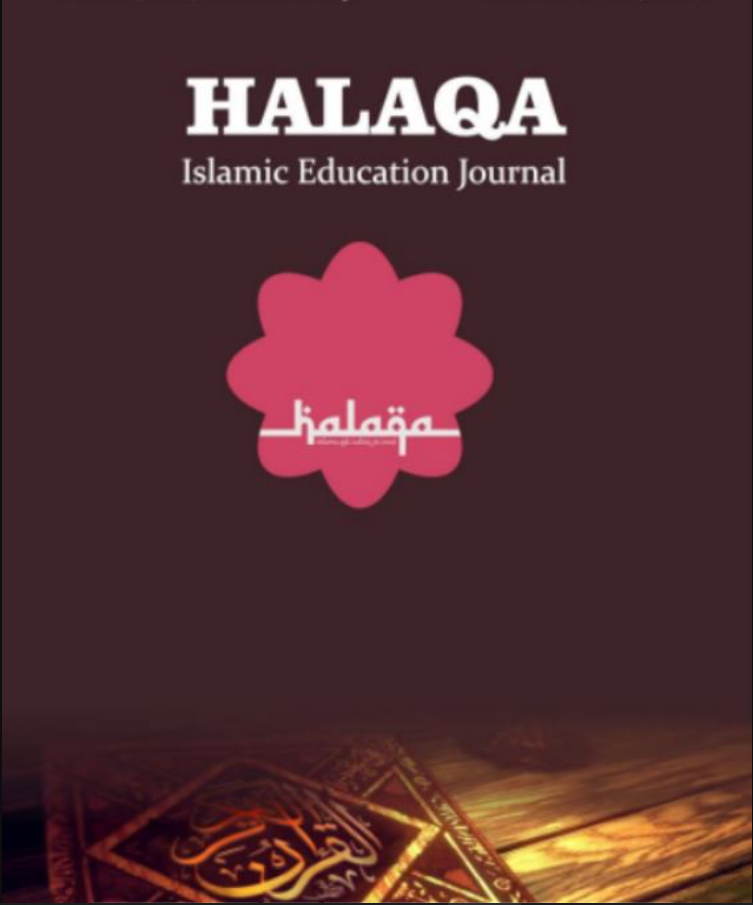Strategi Perguruan Tinggi Swasta Berbasis Agama Membangun Budaya Organisasi untuk Meraih Keunggulan Kompetitif
Religion-Based Private Universities Strategy to Build Organizational Culture to Achieve Competitive Advantage
DOI:
https://doi.org/10.21070/halaqa.v3i1.2119Keywords:
Building Strategy, Organizational Culture, Religion-Based Private UniversitiesAbstract
This study discusses how faith-based private universities run strategies to build organizational culture to gain excellence in the era of market liberalization. Private universities are considered institutions that are vulnerable to the influence of changes in the constellation of society and government regulations. On the other hand, religion-based private universities are still able to survive and contribute to educating the nation's children. This study intends to explore information about strategies to build organizational culture in private universities that support the competitiveness of institutions. Religion-based private universities include those who are able to survive in competition, how they determine the strategy of building the organizational culture of the institution. The main focus of research on leader strategies builds organizational culture to achieve competitive advantage, using a qualitative descriptive research approach with a multicasus study design. The research data are in the form of speech, deeds, attitudes of the leaders and residents of the two faith-based private college campuses in East Java. Data collection through observation, active participation observation and interviews.The results of the study found that religion-based private universities tried to balance the development of external pressure on the achievement of compliance with standard standards, there were weaknesses in innovative capabilities and speed responsive to external pressure. The strategy of university leaders in building organizational culture in two institutions rests on the recruitment process that is strict enough to maintain the religious foundation of the institution's operations. Higher education also relies on the existence of a relatively fixed market segment to seize interested parties and maintain their existence.
Downloads
References
Barney, J. B. 1986. “Organizational Culture: Can It Be a Source of Sustained Competitive Advantage”, Academy of Management Review, Vol 11, No. 3.
Boscor, D. 2015. “Sources of Competitive Advantage in the Field of Higher Education. Case Study: Transilvania University of Brasov”, Bulletin of Transilvania University of Brasov, Series V: Economic Sciences, Vol. 8 (57) No.2 – 2015.
Djokopranoto, R. & Indrajit, R.E.2004. Manajemen Perguruan Tinggi Moderen, BY NC SA
Holbeche, L.S. 2018. “Organisational Effectiveness and Agility”, Journal of Organizational Effectiveness, Vol. 5, Issue 4, 302-3013
Istyatminingsih, F. “Menakar Daya Saing Perguruan Tinggi Kita”, Kompasiana, http://print.kompas.com/baca/2015/12/09/Menakar-Daya-Saing-Perguruan-Tinggi-Kita. Dinduh tanggal 2 September 2016.
Pederzini, G.D.A. 2017. “Neoliberal Awakenings: A Case Study of University Leaders’ Competitive Advantage Sensemaking”, Higher Education Policy.
Purnomo, Margo. 2014. “Agilitas Organisasi-organisasi Entrepenerial”, Jurnal Aplikasi Bisnis, Vol. 5, No. 1
Resmi, N.N. & Mekarsari, N.K.A. 2017. “Pengembangan Perguruan Tinggi Swasta melalui Analisis SWOT”, Prosiding Seminar: “Revitalisasi Tata Kelola Perguruan Tinggi” Unipas Singaraja.
Rosalin, E. 2010. “Membangun Competitive Advantage Perguruan Tinggi dalam Menghadapi Tantangan dan Perubahan Abad 21”, Jurnal Manajemen Pendidikan, No. 02 Thn VI Oktober
Sadri, G. & Lees, B.. 2001. “Developing Corporate Culture as a Competitive Advantage”, Journal of Management Development, Vol. 20, No. 10
Schwab, K. 2015. “ The Fourth Industrial Revolution, What it Means and How to Respond”, Snapshot, December 12
Suharsaputra, U. 2015. Manajemen Pendidikan Perguruan Tinggi; Strategi Menghadapi Perubahan. Bandung: Refika Aditama.
Thomson, P. & Emmens, B. “Building an Engaging Organizational Culture: A Leadership Challenge”, Thomson, P., Johnson, M. & Devlin, J.M. (Eds.). 2018. Conquering Digital Overload, Leadership Strategies that Build Engaging Work Cultures. Palgrave Macmillan.
Tobari. 2015. “Strategi Perguruan Tinggi Swasta Menghadapi Persaingan”, Jurnal Media Wahana Ekonomika, Vol. 12, No.3,Oktober , 61-68
Ulrich, D.& Smalwood, N. “Organization is not Structure but Capability”, Hesselbein, F.& Goldsmith, M. (Eds.) 2009. The Organization of The Future 2; Visions, Strategies, and Insights on Managing in a New Era. San Francisco: Josey-Bass
Wandrial, S. 2012. “Budaya Organisasi (Organizational Culture), Salah Satu sumber Keunggulan Bersaing Perusahaan di Tengah Lingkungan yang Selalu Berubah’, Binus Business Review, Vol. 3, No. 1, Mei.
Warrick, D.D. 2017. “What Leaders Need to Know about Organization Culture”, Business Horizons, Vol. 60, Issue 3, May.
Yukl, G. 2015. Kepemimpinan dalam Organisasi, Alih Bhs: Ati Cahayani. Jakarta: PT Indeks.
Downloads
Published
How to Cite
Issue
Section
License
Authors retain copyright and grant the journal right of first publication with the work simultaneously licensed under a Creative Commons Attribution 4.0 International License that allows others to share the work with an acknowledgement of the work's authorship and initial publication in this journal.







